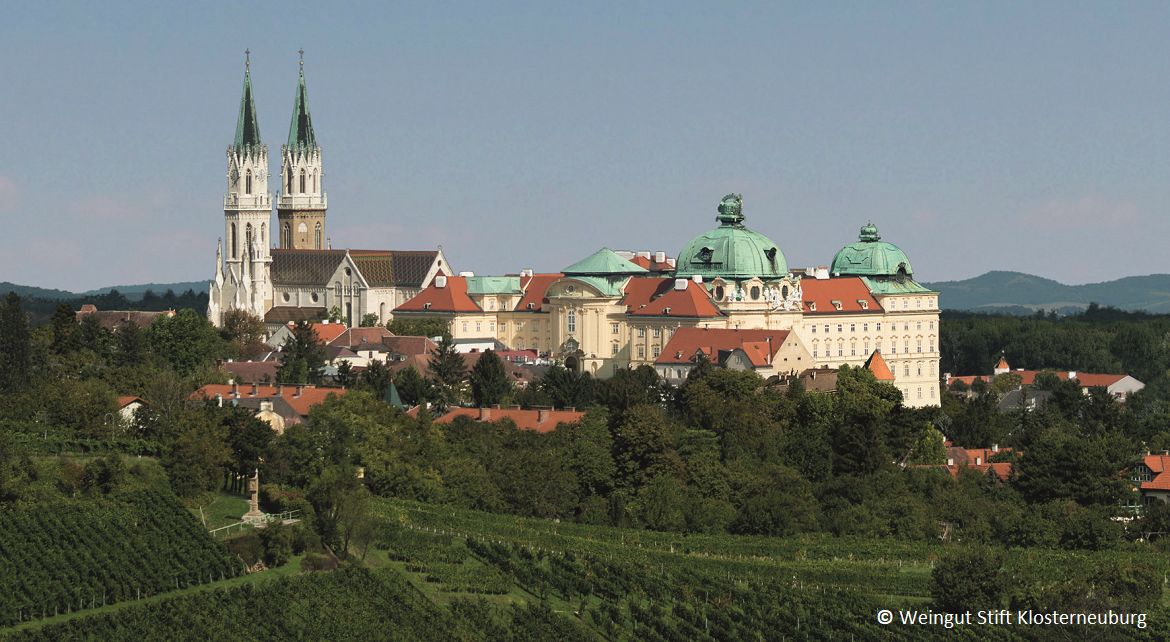South of the Danube is a part of the Lower Austrian wine region Wagram. It is separated from the second part of Wagram north of the Danube. The part Klosterneuburg is separated from the area immediately north of the Austrian capital Vienna the name of the town. In addition to the vineyards of the municipality of Klosterneuburg, those of the municipality of Tulln are also included. Klosterneuburg is an ancient wine-growing area, because the Roman X. century A.D., which was settled in the 1st century A.D., was the most important period for the development of wine. Legion was already engaged in winegrowing at this time. The Augustinian canon monastery was founded by the Babenberg Margrave Leopold III the Saint (1073-1136), because according to legend, the veil of his wife Agnes, which had been blown away by the wind, was found here and the ruler kept his vow. Leopold is also the patron saint of Lower Austria.

In its heyday, the monastery cultivated 1,200 hectares of vineyards in Klosterneuburg alone, while the Klosterneuburg monastery vineyard now only has 30 hectares. This is mainly due to phylloxera, which destroyed many vineyards here at the end of the 19th century. In 1860 the Klosterneuburg Wine Institute was founded in the monastery and the first director was August-Wilhelm Freiherr von Babo (1827-1894). Due to its location, Klosterneuburg is particularly suitable for viticulture, as its hills, which mostly slope towards the south, are bathed in sunlight all day long. The vineyards are located near the Danube and are bordered by the Vienna Woods, which regulate the humidity. The villages of Gugging, Kierling, Scheiblingstein, Weidling and Weidlingbach belong to Klosterneuburg. The area under vines in the municipality is 170 hectares and 75% of it is planted with white wine varieties. The proportion of mixed set is relatively high, from which the typical wine for the numerous Heurigen in the area is made. Well-known vineyards are Franzhauser, Hengstberg, Weidling, Wiegen and Ziegelgrub.
Voices of our members

The wein.plus encyclopaedia is a comprehensive, well-researched reference work. Available anytime and anywhere, it has become an indispensable part of teaching, used by students and myself alike. Highly recommended!
Dominik Trick
Technischer Lehrer, staatl. geprüfter Sommelier, Hotelfachschule Heidelberg